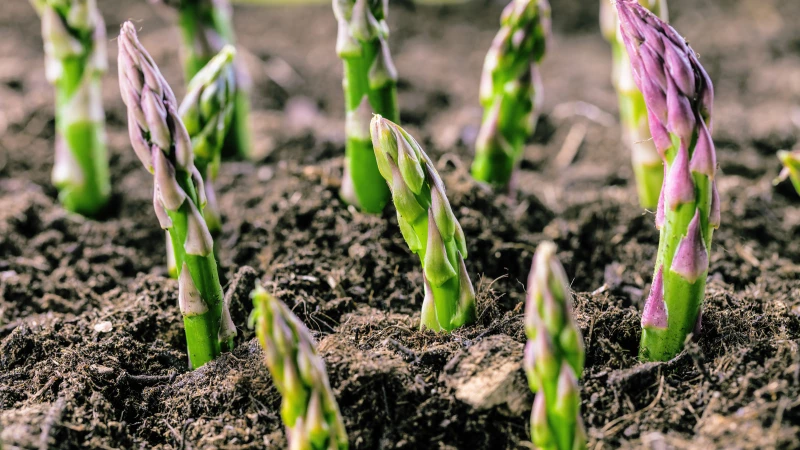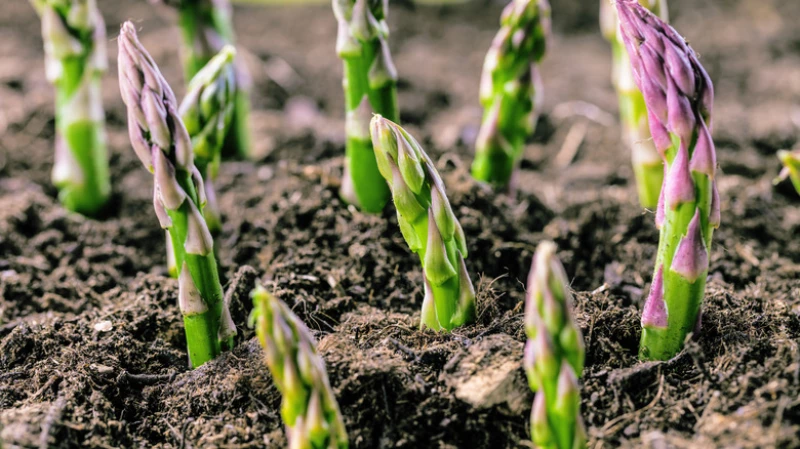Benefits of Growing Asparagus
If you've never grown asparagus, you may want to start. It's one of the most incredible plants to grow, providing a continual harvest throughout early summer. This plant can produce a remarkable 2 inches daily with a harvesting season lasting up to 2 months. You can go outside almost every day and find harvest-ready asparagus waiting for you. It's also a perennial, meaning that once it's established, it will return year after year. Asparagus is typically planted in the spring but can also be planted in the fall.
If grown from crowns (the one-year-old roots of asparagus), asparagus takes about two years to become fully established and ready to harvest. If growing asparagus from seed, you can start harvesting around the third year. This is because it takes around three years for asparagus to mature. Whatever you choose, keep in mind that it's a long-term plant that can continue to produce for 15 years or more.
What month do you plant asparagus?
Asparagus is typically planted in the spring but can also be planted in the fall.
For optimal growth, the best months to plant asparagus are April, May, or early June. Alternatively, you can plant it in late fall while the soil retains warmth, providing the asparagus with more time to establish itself. Asparagus requires a dormant period during cold weather, crucial for crown and root production, ensuring a robust crop for harvest.
The preferred method for planting asparagus is from crowns, as they have already undergone a year of growth. When planting the crowns, begin by digging a trench, allowing at least 1-foot length for each crown. The trench's depth varies based on soil type, ranging from 6 to 8 inches for clay soils to 10 to 12 inches for sandy, well-draining soil. Position the crowns in the trench head-to-toe in a line without spreading the roots. Cover them with 2 to 3 inches of soil and ensure they are kept moist. After 2 to 3 weeks, small asparagus spears will emerge, a few inches tall. Throughout the summer, gradually add more soil until the entire trench is filled, with the crowns positioned around 6 inches below the surface.
Preparing your soil to ensure the right pH levels, nutrient balance, and moisture content is essential for successful asparagus growth. By taking these steps before planting, you can promote maximum productivity and the healthy development of your asparagus plants. While the initial planting process may seem overwhelming, the rewards of growing this vegetable make it well worth the effort. Consider adding asparagus to your garden either in early spring or fall to enjoy bountiful harvests year after year.
Asparagus thrives in soil with a pH level ranging from 6.5 to 7. You can easily test your soil's pH using a pH tester, such as the 3-in-1 Plant Moisture Meter available at Home Depot for approximately $12. This tester also measures soil moisture and light levels, providing you with comprehensive information for optimal plant growth. Additionally, ensure that the soil is well-draining and rich in nutrients and water for asparagus cultivation. If your soil requires additional nutrients, consider using an all-purpose fertilizer like the Trifecta fertilizer available online at MIgardener for $21. This fertilizer promotes flower production, root growth, and overall plant health, leading to the development of larger and more nutritious vegetables. Keep an eye out for signs of nutrient deficiencies in your plants, such as yellowing leaves, burnt edges, stunted growth, or deformities, to determine if additional fertilization is necessary.








